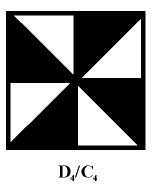Antidote to Atiyah
In a recent talk, "The Nature of Space," Sir Michael Atiyah gave a misleading description of Plato's doctrine of "ideas," or "idealism." Atiyah said that according to Plato, ideas reside in "an imaginary world– the world of the mind," and that what we see in the external world is "some pale reflection" of ideas in the mind.
An antidote to Atiyah's nonsense may be found in the Catholic Encyclopedia:
"So it came to pass that the word idea in various languages took on more and more the meaning of 'representation,' 'mental image,' and the like. Hence too, there was gradually introduced the terminology which we find in the writings of Berkeley, and according to which idealism is the doctrine that ascribes reality to our ideas, i.e. our representations, but denies the reality of the physical world. This sort of idealism is just the reverse of that which was held by the philosophers of antiquity and their Christian successors; it does away with the reality of ideal principles by confining them exclusively to the thinking subject; it is a spurious idealism…."
Atiyah contrasts his mistaken view of Plato with what he calls the "realism" of Hume. He does not mention that Plato's doctrine of ideas is also known as "realism." For details, see, again, the Catholic Encyclopedia:
"The conciliation of the one and the many, the changing and the permanent, was a favourite problem with the Greeks; it leads to the problem of universals. The typical affirmation of Exaggerated Realism, the most outspoken ever made, appears in Plato's philosophy; the real must possess the attributes of necessity, universality, unity, and immutability which are found in our intellectual representations. And as the sensible world contains only the contingent, the particular, the unstable, it follows that the real exists outside and above the sensible world. Plato calls it eîdos, idea. The idea is absolutely stable and exists by itself (ontos on; auta kath' auta), isolated from the phenomenal world, distinct from the Divine and human intellect…. The exaggerated Realism of Plato… is the principal doctrine of his metaphysics."
Atiyah's misleading remarks may appeal to believers in the contemptible religion of Scientism, but they have little to do with either historical reality or authentic philosophy.
















